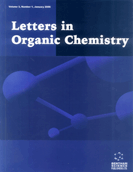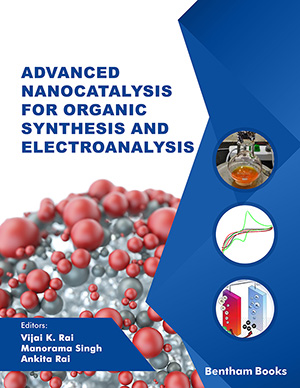Abstract
In recent years, the interest in biologically active compounds of natural origin has increased significantly. Researchers' research focuses on increasing the activity of curcumin by forming complexes with metals such as vanadium, iron, copper or gallium. Introduction of metal compounds to curcumin increases the scope of application in pharmacology. The main direction of research development is the treatment of tumors, among others stomach cancer or leukemia. Curcuminoids are the main components of turmeric (Curcuma longa L.), a plant from India and South-East Asia. Due to its intense yellow-orange color and pleasant aroma, the powdered rootstalk is widely used in the food industry, as natural dye and spice. The chemical compound responsible for the characteristic color of rhizomes of curcuma is 1,6-heptadien-3,5-dione-1,7-bis(4-hydroxy-3-methoxyphenyl) - (1E, 6E) called curcumin. This work aims to characterize curcumin in terms of its structure, therapeutic properties and also as a substrate for the synthesis of valuable derivatives like tetrahydrocurcumin. Knowledge about this relationship based on literature analysis will enable a better understanding of the factors responsible for its biological activity.
Keywords: Chemical disintegration, chemoprevention, curcumin, diacetylcurcumin complexes, modification of structure, tautomerization.
[http://dx.doi.org/10.1201/9781420006322]
[http://dx.doi.org/10.3923/ijps.2006.494.498]
[http://dx.doi.org/10.1007/978-0-387-46401-5_1] [PMID: 17569205]
[http://dx.doi.org/10.3923/ajps.2002.616.617]
[http://dx.doi.org/10.1002/cber.191004302168]
[http://dx.doi.org/10.1080/10408690490424702] [PMID: 15116757]
[http://dx.doi.org/10.1016/j.saa.2006.08.018] [PMID: 16979936]
[http://dx.doi.org/10.1248/cpb.41.1640] [PMID: 8221978]
[http://dx.doi.org/10.1016/S0731-7085(96)02024-9] [PMID: 9278892]
[http://dx.doi.org/10.1074/jbc.270.42.24995] [PMID: 7559628]
[PMID: 14657565]
[http://dx.doi.org/10.1016/j.canlet.2004.09.042] [PMID: 15914268]
[http://dx.doi.org/10.1093/carcin/19.8.1357] [PMID: 9744529]
[http://dx.doi.org/10.1006/bbrc.1995.1076] [PMID: 7530002]
[http://dx.doi.org/10.1124/mol.105.017400] [PMID: 16219905]
[http://dx.doi.org/10.1016/S0006-291X(03)00479-0] [PMID: 12684045]
[http://dx.doi.org/10.1093/carcin/bgg082] [PMID: 12807727]
[http://dx.doi.org/10.1006/excr.2001.5381] [PMID: 11716543]
[PMID: 1899046]
[PMID: 10477620]
[http://dx.doi.org/10.1016/j.ejca.2005.05.009] [PMID: 16081279]
[http://dx.doi.org/10.1016/j.ejphar.2006.01.028] [PMID: 16476424]
[http://dx.doi.org/10.1007/BF03401744] [PMID: 10780880]
[http://dx.doi.org/10.1111/j.2042-7158.1997.tb06761.x] [PMID: 9120760]
[http://dx.doi.org/10.1248/bpb.28.2220] [PMID: 16327153]
[PMID: 19721899]
[http://dx.doi.org/10.1016/j.tifs.2005.08.006]
[http://dx.doi.org/10.5511/plantbiotechnology1984.13.69]
[http://dx.doi.org/10.1002/mnfr.201100741] [PMID: 22887802]
[http://dx.doi.org/10.1016/0016-5085(87)90450-1] [PMID: 3305137]
[PMID: 11712783]
[PMID: 21735822]
[http://dx.doi.org/10.3390/molecules16064567] [PMID: 21642934]
[http://dx.doi.org/10.1021/mp700113r] [PMID: 17999464]
[http://dx.doi.org/10.4103/2230-973X.82432] [PMID: 23071931]
[http://dx.doi.org/10.1016/j.jfoodeng.2004.05.003]
[http://dx.doi.org/10.1021/np060263s] [PMID: 17315954]
[http://dx.doi.org/10.1021/jp3050516] [PMID: 23194397]
[http://dx.doi.org/10.1074/jbc.M110.178806] [PMID: 21071447]
[http://dx.doi.org/10.1007/BF01041928] [PMID: 3765852]
[http://dx.doi.org/10.1111/j.1755-5949.2010.00147.x] [PMID: 20406252]
[http://dx.doi.org/10.1016/j.bbr.2009.07.012] [PMID: 19616038]
[http://dx.doi.org/10.1016/j.lfs.2006.06.001] [PMID: 16806281]
[http://dx.doi.org/10.1111/cbdd.13061] [PMID: 28649799]
[http://dx.doi.org/10.1248/cpb.c13-00295] [PMID: 23666373]
[http://dx.doi.org/10.1016/j.bmcl.2015.12.013] [PMID: 26810315]
[http://dx.doi.org/10.1111/j.1443-9573.2005.00184.x] [PMID: 15667556]
[http://dx.doi.org/10.1016/S0361-9230(01)00455-5] [PMID: 11470308]
[http://dx.doi.org/10.1016/j.jinorgbio.2006.09.020] [PMID: 17097145]
[http://dx.doi.org/10.1038/91036] [PMID: 11479580]
[http://dx.doi.org/10.2174/157340609789117912] [PMID: 19534681]
[http://dx.doi.org/10.1039/C5CS00088B] [PMID: 25964104]
[http://dx.doi.org/10.1016/j.jinorgbio.2005.08.001] [PMID: 16171869]
[http://dx.doi.org/10.1002/aoc.1089]
[http://dx.doi.org/10.1016/j.foodchem.2010.08.016]


























